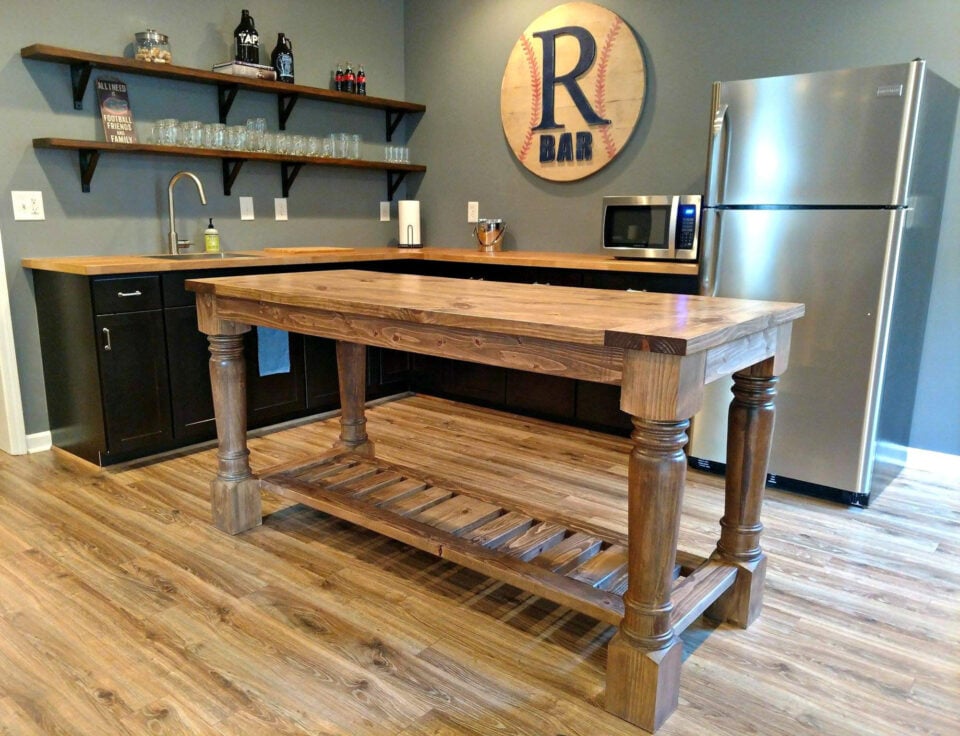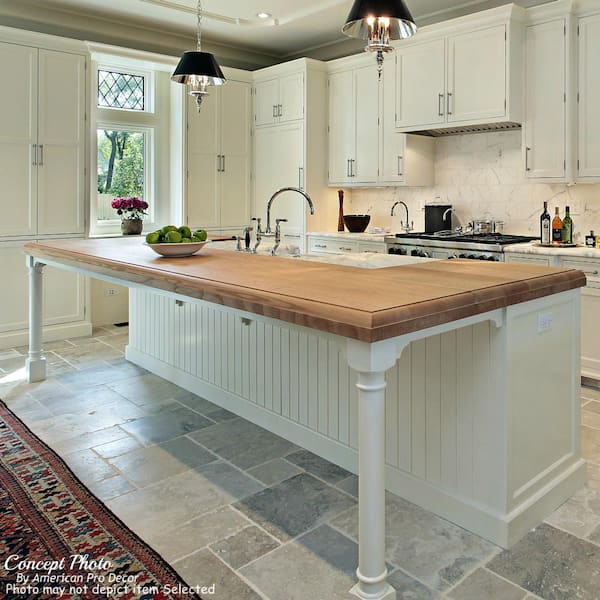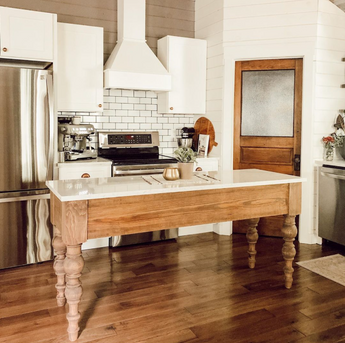How to Include a Kitchen Island Leg into Your Kitchen Remodel
How to Include a Kitchen Island Leg into Your Kitchen Remodel
Blog Article
The Significance of a Sturdy Cooking Area Island Leg in Creating a Practical Cooking Location
A durable kitchen island leg serves as an essential component in establishing a functional cooking environment, providing required assistance for both the kitchen counter and various kitchen tasks. As kitchen areas progress into multifunctional areas for cooking, eating, and socializing, the choice of materials and style factors to consider for island legs becomes progressively important.
Benefits of Sturdy Island Legs
Offering important support, durable kitchen island legs play a pivotal function in enhancing the capability and sturdiness of cooking area islands - kitchen island leg. These legs not just bear the weight of the counter top and any additional things positioned on the island, yet additionally contribute to the total security of the framework. A well-supported kitchen area island makes certain that it stays useful and upright, also under hefty use, which is specifically crucial in hectic cooking area atmospheres
Furthermore, durable island legs can enhance the visual charm of the kitchen area. They offer a solid structure that can match various layout styles, from modern to standard. This flexibility allows house owners to personalize their kitchen area islands according to individual preference while guaranteeing that the structural stability remains uncompromised.
In enhancement to their encouraging role, durable kitchen island legs can also boost safety and security. A steady island decreases the threat of accidents created by wobbling or tipping, which is specifically important in houses with kids or senior individuals. Strong legs can facilitate a smooth flow of tasks, permitting for efficient meal prep work and social interactions within the kitchen space. Eventually, purchasing tough kitchen area island legs is important for a practical and visually pleasing cooking location.
Products for Kitchen Area Island Legs
When choosing materials for cooking area island legs, toughness and visual charm are important elements to take into consideration,. One of the most common products consist of hardwood, steel, and crafted timber, each offering unique advantages.
Wood, such as maple, oak, or cherry, is a traditional choice due to its stamina and timeless charm (kitchen island leg). It can hold up against significant weight and is immune to put on, making it excellent for high-use kitchen environments. In addition, wood can be discolored or repainted to match different cooking area designs
Steel legs, commonly crafted from stainless-steel or wrought iron, provide a modern and commercial appearance. They are extremely strong and can sustain considerable loads while being resistant to dampness and warmth, which is useful in a cooking area. Metal legs can also be quickly cleaned up, improving their usefulness.

Design Factors To Consider for Stability
The option of products for kitchen island legs straight influences the layout factors to consider for stability. When making a kitchen area island, it is extremely important to review the weight-bearing capability of the chosen products. Larger materials, such as solid wood or metal, commonly provide better security, particularly under the stress and anxiety of day-to-day use.
In addition, the leg style must integrate proper geometry to improve stability. A larger base boosts the assistance location, decreasing the danger of tipping or wobbling. Factor to consider must also be provided to the elevation of the legs; disproportionate leg lengths can bring about inequality, endangering the overall security of the island.
Additionally, the circulation of weight throughout the island is essential. Ensuring that the leg positioning aligns with the heaviest parts, such as counter tops and appliances, will further boost security.
Upkeep Tips for Longevity

Depending on the material of the legs-- whether wood, metal, or composite-- proper cleansing methods must be utilized. Metal legs may need a light gloss to avoid corrosion and preserve their appeal.
In addition, tightening up bolts and screws consistently can ensure stability and protect against tottering. Think about strengthening the legs with added brackets or sustains to enhance resilience if the kitchen island experiences heavy use. Using a protective finish or sealant can safeguard against moisture and spots, prolonging the life-span of the legs. By adhering to these maintenance suggestions, homeowners can ensure their kitchen area island legs continue to be durable and practical for many years to come.
Choosing the Right Leg Style
Normal maintenance ensures that cooking area island legs continue to be strong and practical, but choosing the ideal leg style is just as essential for both aesthetic appeals and support. The option of leg style can dramatically affect the overall design and harmony of your cooking area.

Functionality is another critical element. Thicker legs or those with a sturdy base can sustain larger countertops and devices, improving the island's energy. On the other hand, slim legs may create a ventilated appearance, suitable for lighter layouts however potentially less supportive.
Verdict
In recap, the importance of sturdy cooking area island legs can not be overemphasized in the development of a useful cooking location. These legs provide crucial assistance, boost stability, and add to the total aesthetic of the cooking official site area.
A durable cooking area island leg serves as an essential element in establishing a practical food preparation setting, supplying essential support for both the counter top and various kitchen activities.Providing essential assistance, tough kitchen island legs play a crucial role in enhancing the capability and sturdiness of cooking area islands. Eventually, investing in strong kitchen area island legs is important for a functional and visually pleasing cooking location.
Factor to consider needs to likewise be provided to the height of the legs; disproportionate leg sizes can lead to imbalance, compromising the overall security of the island.
Wooden legs give warmth and a traditional look, while metal legs supply a contemporary and commercial feeling.
Report this page